Serving 588 students in grades 6-8, Fairview Middle School ranks in the bottom 50% of all schools in Washington for overall test scores (math proficiency is bottom 50%, and reading proficiency is bottom 50%).
The percentage of students achieving proficiency in math is 28% (which is lower than the Washington state average of 40%). The percentage of students achieving proficiency in reading/language arts is 46% (which is lower than the Washington state average of 53%).
The student:teacher ratio of 19:1 is higher than the Washington state level of 16:1.
Minority enrollment is 53% of the student body (majority Hispanic), which is higher than the Washington state average of 52% (majority Hispanic).
Quick Stats (2025)
- Grades: 6-8
- Enrollment: 588 students
- Student:Teacher Ratio: 19:1
- Minority Enrollment: 53%
- Overall Testing Rank: Bottom 50% in WA
- Math Proficiency: 28% (Btm 50%)
- Reading Proficiency: 46% (Btm 50%)
- Science Proficiency: 26% (Btm 50%)
- Source: National Center for Education Statistics (NCES), WA Dept. of Education
Top Rankings
Fairview Middle School ranks among the top 20% of public schools in Washington for:
Category
Attribute
Diversity
School Overview
Fairview Middle School's student population of 588 students has declined by 11% over five school years.
The teacher population of 31 teachers has declined by 11% over five school years.
Grades Offered
Grades 6-8
(offers virtual instruction)
(offers virtual instruction)
Total Students
588 students
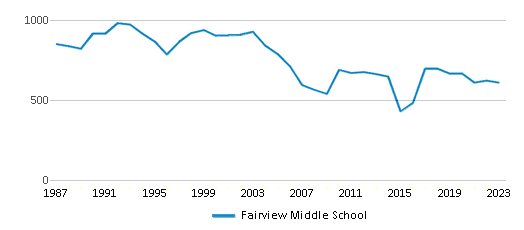
Gender %
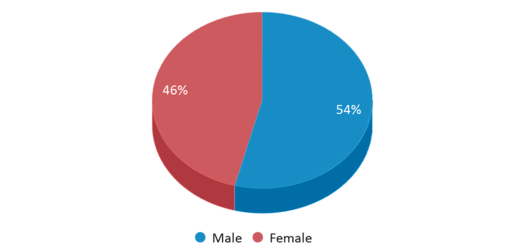
Total Classroom Teachers
31 teachers
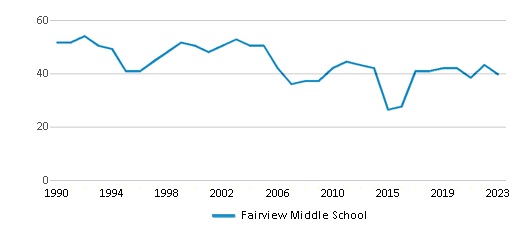
Students by Grade
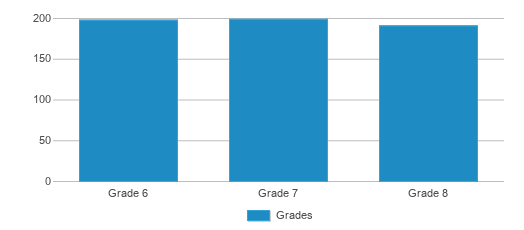
School Rankings
Fairview Middle School ranks within the bottom 50% of all 2,113 schools in Washington (based off of combined math and reading proficiency testing data).
The diversity score of Fairview Middle School is 0.70, which is more than the diversity score at state average of 0.69. The school's diversity has stayed relatively flat over five school years.
Overall Testing Rank
#1467 out of 2113 schools
(Bottom 50%)
(Bottom 50%)
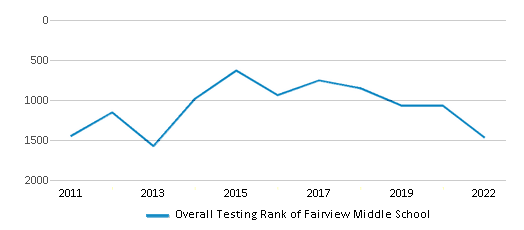
Math Test Scores (% Proficient)
28%
40%
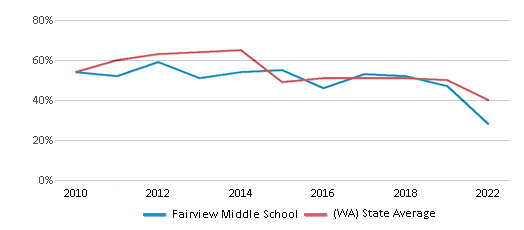
Reading/Language Arts Test Scores (% Proficient)
46%
53%

Science Test Scores (% Proficient)
26%
49%
Student : Teacher Ratio
19:1
16:1
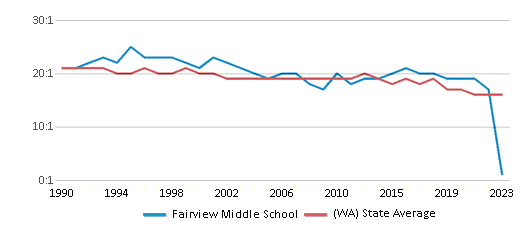
American Indian
1%
1%
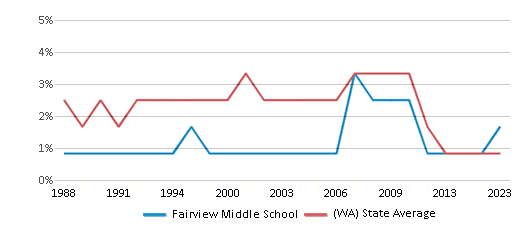
Asian
4%
9%
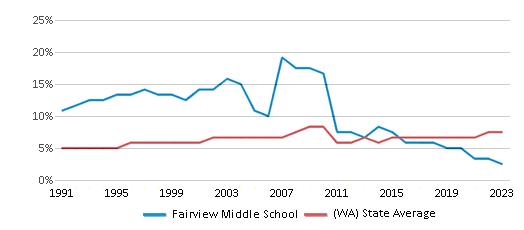
Hispanic
20%
26%
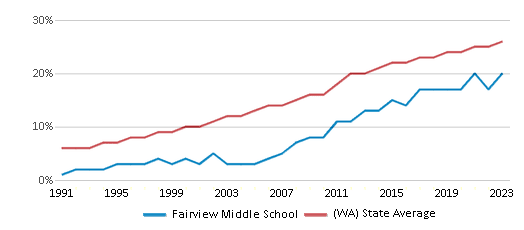
Black
4%
5%

White
47%
48%
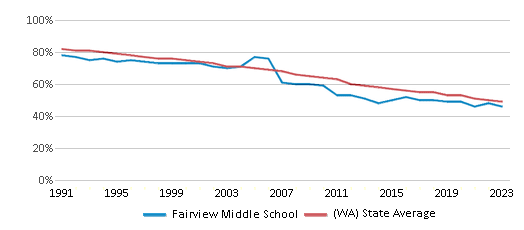
Hawaiian
3%
2%
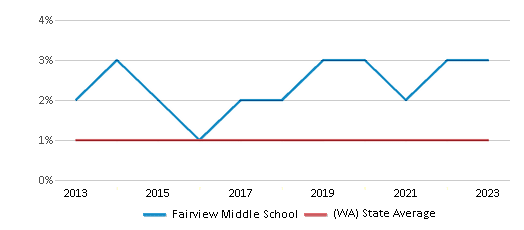
Two or more races
21%
9%
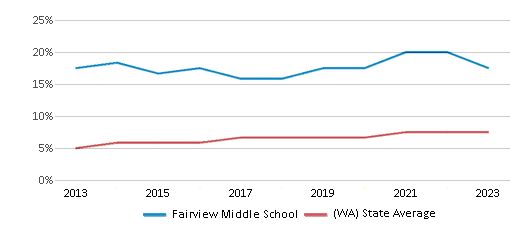
All Ethnic Groups
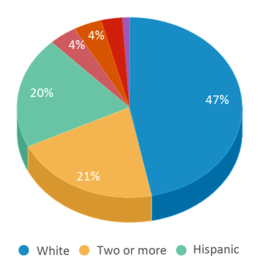
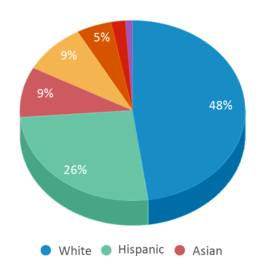
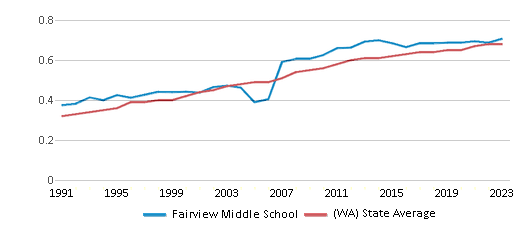
Eligible for Free Lunch
56%
49%
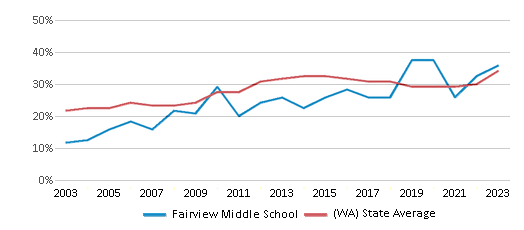
Eligible for Reduced Lunch
12%
8%
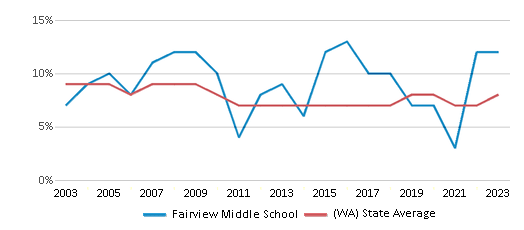
School Statewide Testing
School District Name
Source: National Center for Education Statistics (NCES), WA Dept. of Education
Profile last updated: 02/09/2025
Frequently Asked Questions
What is Fairview Middle School's ranking?
Fairview Middle School is ranked #1467 out of 2,113 schools, which ranks it among the bottom 50% of public schools in Washington.
What schools are Fairview Middle School often compared to?
Fairview Middle Schoolis often viewed alongside schools like Central Kitsap Middle School, Ridgetop Middle School, Mountain View Middle School by visitors of our site.
What percent of students have achieved state testing proficiency in math and reading?
28% of students have achieved math proficiency (compared to the 40% WA state average), while 46% of students have achieved reading proficiency (compared to the 53% WA state average).
How many students attend Fairview Middle School?
588 students attend Fairview Middle School.
What is the racial composition of the student body?
47% of Fairview Middle School students are White, 21% of students are Two or more races, 20% of students are Hispanic, 4% of students are Asian, 4% of students are Black, 3% of students are Hawaiian, and 1% of students are American Indian.
What is the student:teacher ratio of Fairview Middle School?
Fairview Middle School has a student ration of 19:1, which is higher than the Washington state average of 16:1.
What grades does Fairview Middle School offer ?
Fairview Middle School offers enrollment in grades 6-8 (offers virtual instruction).
What school district is Fairview Middle School part of?
Fairview Middle School is part of Central Kitsap School District.
School Reviews
2 1/29/2020
My child is pushed away to much. Most of the teachers don't want to help figure out the root of the problem there is not much connection between student and teacher. It seems like if they mess up once they are constantly looked at as a bad person. The assistant principal used those exact words in a conversation with him, telling my son he is a bad kid. What is he supposed to take from that? He has been bullied by some students and he feels bullied by one of his teachers. My son does not want to go to school there anymore. This is one of the worst feelings in the world when your 7th grader wants to quit school, it's sad when a student feels defeated almost every day when he comes home.
Review Fairview Middle School. Reviews should be a few sentences in length. Please include any comments on:
- Quality of academic programs, teachers, and facilities
- Availability of music, art, sports and other extracurricular activities
Recent Articles

What Is A Charter School?
Explore the world of charter schools in this comprehensive guide. Learn about their history, how they operate, and the pros and cons of this educational innovation. Discover key facts about charter schools, including admission policies, demographics, and funding, as well as what to look for when considering a charter school for your child.

10 Reasons Why High School Sports Benefit Students
Discover the 10 compelling reasons why high school sports are beneficial for students. This comprehensive article explores how athletics enhance academic performance, foster personal growth, and develop crucial life skills. From improved fitness and time management to leadership development and community representation, learn why participating in high school sports can be a game-changer for students' overall success and well-being.

February 05, 2025
Understanding the U.S. Department of Education: Structure, Impact, and EvolutionWe explore how the Department of Education shapes American education, from its cabinet-level leadership to its impact on millions of students, written for general audiences seeking clarity on this vital institution.





